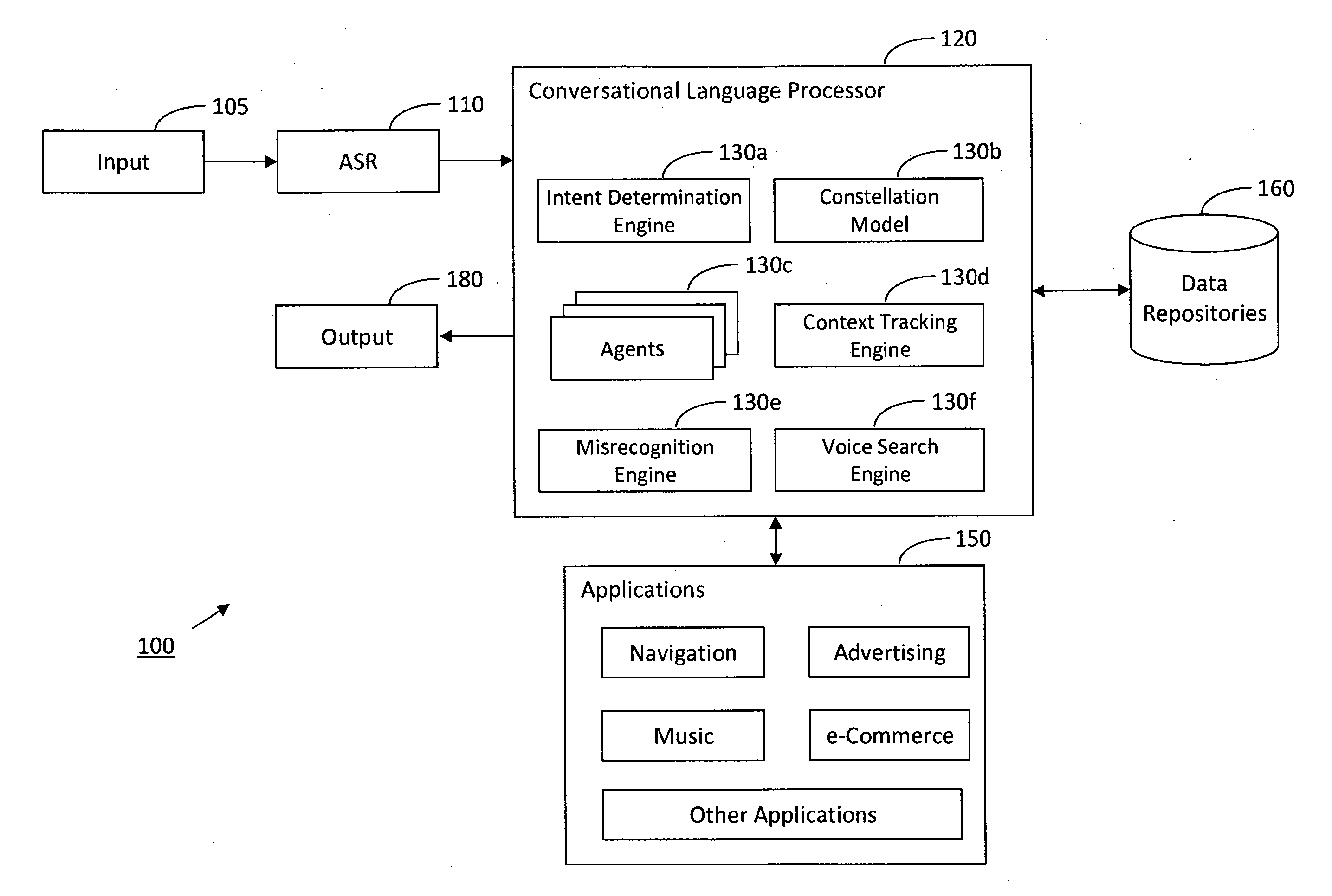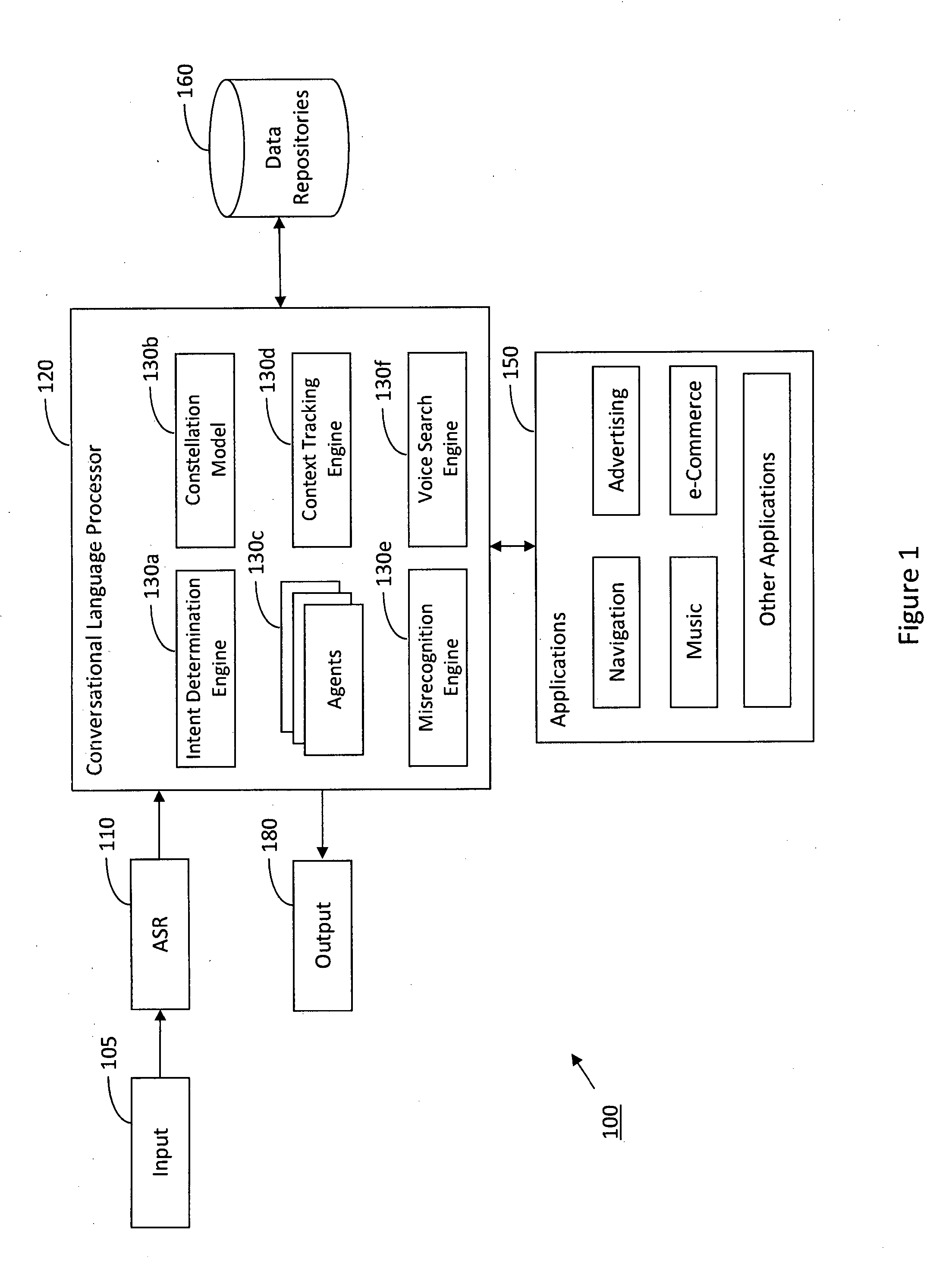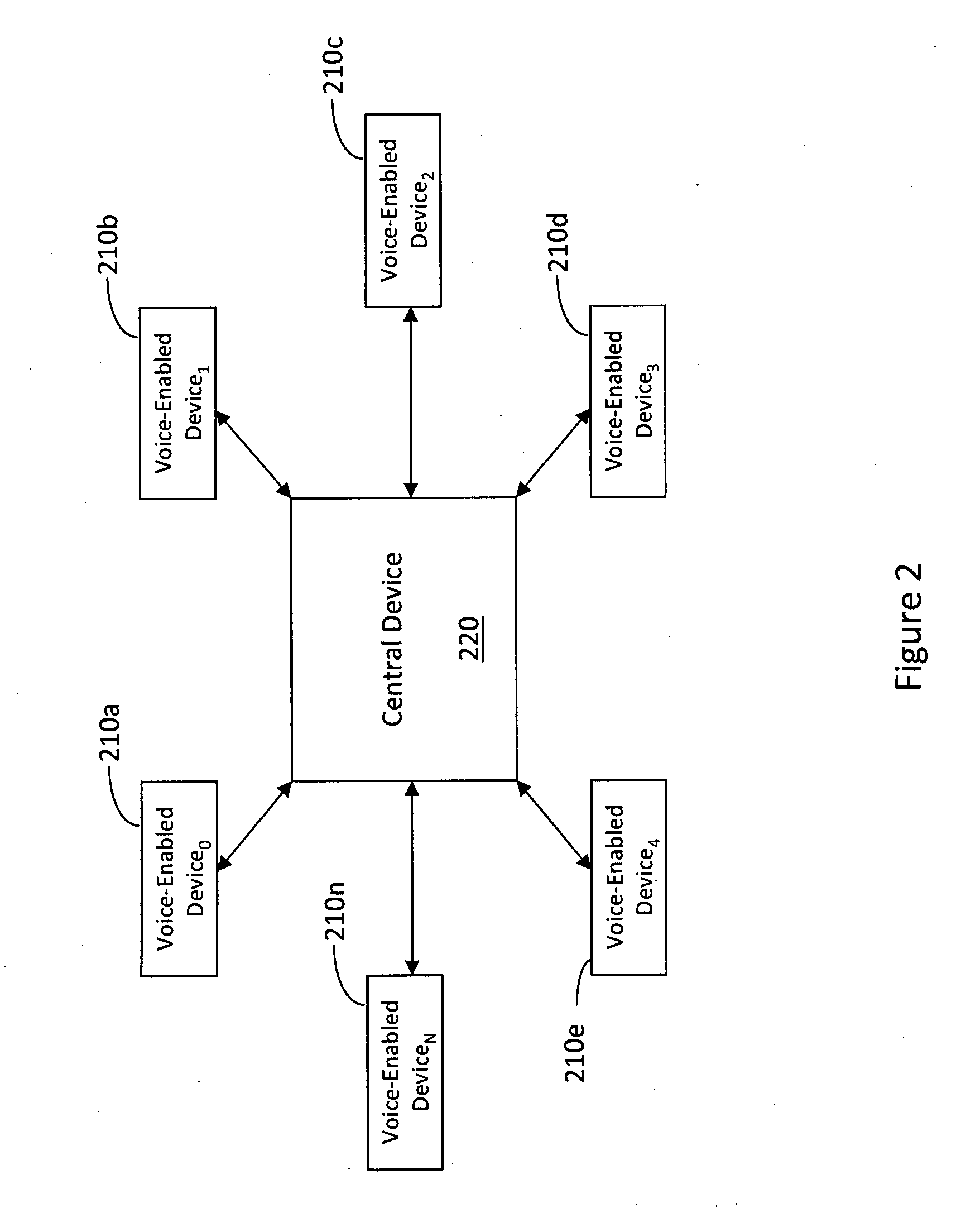System and method for an integrated, multi-modal, multi-device natural language voice services environment
a natural language and voice technology, applied in the field of integrated voice services environment, can solve the problems of preventing users from fully exploiting the capabilities of their electronic devices, affecting the mass market adoption of many technologies, and many users not using, or even knowing, the potential capabilities of their devices
- Summary
- Abstract
- Description
- Claims
- Application Information
AI Technical Summary
Benefits of technology
Problems solved by technology
Method used
Image
Examples
Embodiment Construction
[0021]According to various aspects of the invention, FIG. 1 illustrates a block diagram of an exemplary multi-modal electronic device 100 that may be provided in a natural language voice services environment that includes one or more additional multi-modal devices (e.g., as illustrated in FIGS. 2 and 6). As will be apparent, the electronic device 100 illustrated in FIG. 1 may be any suitable voice-enabled electronic device (e.g., a telematics device, a personal navigation device, a mobile phone, a VoIP node, a personal computer, a media device, an embedded device, a server, or another electronic device). The device 100 may include various components that collectively provide a capability to process conversational, multi-modal natural language inputs. As such, a user of the device 100 may engage in multi-modal conversational dialogues with the voice-enabled electronic device 100 to resolve requests in a free form, cooperative manner.
[0022]For example, the natural language processing ...
PUM
 Login to View More
Login to View More Abstract
Description
Claims
Application Information
 Login to View More
Login to View More - R&D
- Intellectual Property
- Life Sciences
- Materials
- Tech Scout
- Unparalleled Data Quality
- Higher Quality Content
- 60% Fewer Hallucinations
Browse by: Latest US Patents, China's latest patents, Technical Efficacy Thesaurus, Application Domain, Technology Topic, Popular Technical Reports.
© 2025 PatSnap. All rights reserved.Legal|Privacy policy|Modern Slavery Act Transparency Statement|Sitemap|About US| Contact US: help@patsnap.com



